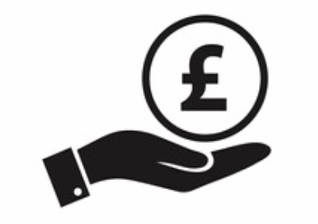Key Features
TBL differs from traditional reporting frameworks as it includes social and ecological aspects that are often difficult to measure. The notion is that by enhancing in any one sector, organisations improve overall. TBL is primarily based on three key features/pillars or commonly referred to as the “three Ps” – profit, people and planet.
-
 Profit
– In a typical capitalist economic environment, an organisation’s success greatly relies on its financial stability and performance, or the revenue it generates for the shareholders. Strategic business planning initiatives and key business decisions are prudently designed to maximise profits whilst decreasing expenditures and mitigating internal and external risks. The latter view was mainly the thing of the past, as many organisations’ strategic objectives ended there. In the context of TBL, organisations do not merely focus on generating profits for their shareholders, but also how they can facilitate and contribute to wider society and environment (e.g., stimulating economic development, creating wealth by rewarding workforces justly, assisting a network of local suppliers with its business, engendering innovation, and reimbursing its rational share of taxes to government). With this focus, now purpose-driven leadership in most leading multinational organisations have realised that they have the authority to use their businesses to positively transform the world without hindering their financial stability and overall performance. In many cases, adopting sustainability initiatives has proven to drive business success i.e., Ben & Jerry’s social mission, Lego’s pledge to sustainability, and Starbucks’s commitment to ethical sourcing, are some of the leading examples. In the end, it is all about making financially prudent but ethically driven decisions about how and where to source materials, products, or labour.
Profit
– In a typical capitalist economic environment, an organisation’s success greatly relies on its financial stability and performance, or the revenue it generates for the shareholders. Strategic business planning initiatives and key business decisions are prudently designed to maximise profits whilst decreasing expenditures and mitigating internal and external risks. The latter view was mainly the thing of the past, as many organisations’ strategic objectives ended there. In the context of TBL, organisations do not merely focus on generating profits for their shareholders, but also how they can facilitate and contribute to wider society and environment (e.g., stimulating economic development, creating wealth by rewarding workforces justly, assisting a network of local suppliers with its business, engendering innovation, and reimbursing its rational share of taxes to government). With this focus, now purpose-driven leadership in most leading multinational organisations have realised that they have the authority to use their businesses to positively transform the world without hindering their financial stability and overall performance. In many cases, adopting sustainability initiatives has proven to drive business success i.e., Ben & Jerry’s social mission, Lego’s pledge to sustainability, and Starbucks’s commitment to ethical sourcing, are some of the leading examples. In the end, it is all about making financially prudent but ethically driven decisions about how and where to source materials, products, or labour.
-
 People
– This bottom line highlights the societal impact, or its commitment and assurance of service towards people and the wider community. TBL in this context, gauges an organisation’s impact on human capital. However, before moving into further discussion, it is vital to distinguish between an organisation’s shareholders and stakeholders. From a conventional perspective, organisations have mainly focused on creating value for those who own shares of the organisation. Whereas, with the mounting external pressures for achieving SDGs, organisations have gradually embraced sustainability practices, with this stance, they have transformed their focus toward creating value for all stakeholders impacted by business decisions, including customers/consumers, vendors/suppliers, workforce (internal and relocated), and wider community. As such, TBL acknowledges the interdependency of all the human dealings, connections and collaborations that facilitate the organisation to operate. The latter can transform into activities e.g., ensuring rational appointment practices and promoting volunteerism in the workplace, provision of quality healthcare benefits, offering professional development activities, facilitating flexible work schedules, and developing a safe and healthy work environment.
People
– This bottom line highlights the societal impact, or its commitment and assurance of service towards people and the wider community. TBL in this context, gauges an organisation’s impact on human capital. However, before moving into further discussion, it is vital to distinguish between an organisation’s shareholders and stakeholders. From a conventional perspective, organisations have mainly focused on creating value for those who own shares of the organisation. Whereas, with the mounting external pressures for achieving SDGs, organisations have gradually embraced sustainability practices, with this stance, they have transformed their focus toward creating value for all stakeholders impacted by business decisions, including customers/consumers, vendors/suppliers, workforce (internal and relocated), and wider community. As such, TBL acknowledges the interdependency of all the human dealings, connections and collaborations that facilitate the organisation to operate. The latter can transform into activities e.g., ensuring rational appointment practices and promoting volunteerism in the workplace, provision of quality healthcare benefits, offering professional development activities, facilitating flexible work schedules, and developing a safe and healthy work environment.
-
 Planet
– This bottom line is about making a positive impact on the planet. Since the birth of the industrial revolution in 1750 up until 1914, many large industries and manufacturing organisations contributed towards a staggering amount of environmental degradation – this has been the key driver of climate change. Whilst organisations have traditionally been the greatest contributors to climate change, they also have the power to drive positive change. For instance, several business leaders are recognising their onus towards implementing corporate social responsibility practices in their organisations. However, it is not the multinationals who should be the sole contributors, small and medium size businesses (who are the backbone of every economy) also need to ensure they engage in reducing ecological footprint. Regardless of whether big or small, every business recognises that the lesser environmental impact an organisation has, the lengthier it can thrive. Thus, transforming business operational practices like not producing products that are unsafe or unhealthy for the planet and the people, but it also includes reducing consumption, waste, and emissions. It involves specific actions, such as using renewable energy sources, reducing energy use, disposing of toxic materials safely and adopting a host of green corporate policies and practices are steps in the right direction.
Planet
– This bottom line is about making a positive impact on the planet. Since the birth of the industrial revolution in 1750 up until 1914, many large industries and manufacturing organisations contributed towards a staggering amount of environmental degradation – this has been the key driver of climate change. Whilst organisations have traditionally been the greatest contributors to climate change, they also have the power to drive positive change. For instance, several business leaders are recognising their onus towards implementing corporate social responsibility practices in their organisations. However, it is not the multinationals who should be the sole contributors, small and medium size businesses (who are the backbone of every economy) also need to ensure they engage in reducing ecological footprint. Regardless of whether big or small, every business recognises that the lesser environmental impact an organisation has, the lengthier it can thrive. Thus, transforming business operational practices like not producing products that are unsafe or unhealthy for the planet and the people, but it also includes reducing consumption, waste, and emissions. It involves specific actions, such as using renewable energy sources, reducing energy use, disposing of toxic materials safely and adopting a host of green corporate policies and practices are steps in the right direction.